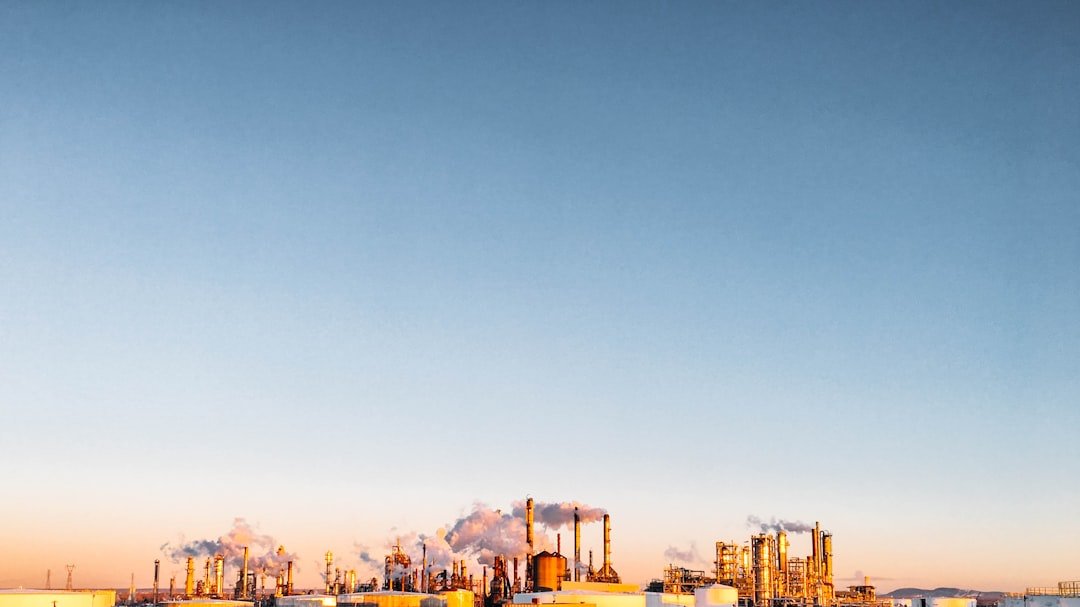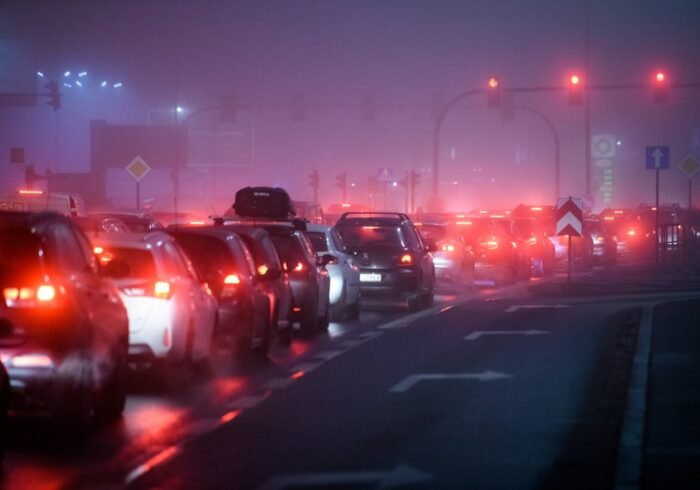Anthropogenic Impact on Climate Change With profound effects on ecosystems, human health, and international economies, climate change has become one of the 21st century’s most urgent issues. The idea of anthropogenic impact—the ways in which human activity has substantially changed the natural environment—lies at the core of this crisis. Significant increases in global temperatures, changes in weather patterns, and a variety of other environmental changes brought about by this alteration have put the delicate balance of life on Earth in jeopardy. To effectively mitigate its effects and prepare for an uncertain future, it is imperative to comprehend the anthropogenic factors causing climate change. Due mostly to the emission of greenhouse gases (GHGs) into the atmosphere, human activity has sped up the rate of climate change. The greenhouse effect is a warming phenomenon caused by these gases’ ability to trap heat.
Key Takeaways
- Human activities have significantly impacted climate change through the release of greenhouse gases and deforestation.
- Greenhouse gas emissions, primarily from burning fossil fuels, are the main contributor to anthropogenic climate change.
- Deforestation and land use change also play a significant role in climate change by reducing the Earth’s capacity to absorb carbon dioxide.
- Industrialization has led to increased emissions of greenhouse gases and other pollutants, further exacerbating climate change.
- Urbanization and agriculture also contribute to climate change through increased energy consumption and land use changes.
Although natural processes also play a role in climate variability, human activity—particularly since the Industrial Revolution—is primarily responsible for the current trajectory of climate change. The need for sustainable practices grows more pressing as societies continue to change and grow. The historical contributions, greenhouse gas emissions, deforestation, industrialization, urbanization, agriculture, and possible mitigation techniques are just a few of the anthropogenic factors that will be discussed in this article.
An Important Development: The Industrial Revolution. However, the effects of human activity on the global climate did not become significant and long-lasting until the late 18th century, with the advent of the Industrial Revolution. Given that coal, oil, and natural gas were now the main energy sources for transportation, industry, and the production of electricity, the widespread use of fossil fuels for energy production represented a dramatic shift. Contributions to climate change are intensifying. The effects of human activity on climate change have only increased in the modern era.
Due to the world’s population growth, there is a greater need for resources, food, and energy. Rapid urbanization has made cities hubs of economic activity that mainly depend on fossil fuels. Innovations in technology have also made it easier for industries to produce large volumes of greenhouse gases.
| Impact | Metrics |
|---|---|
| Greenhouse Gas Emissions | CO2, Methane, Nitrous Oxide |
| Temperature Rise | Global average temperature increase |
| Sea Level Rise | Annual sea level rise |
| Extreme Weather Events | Frequency and intensity of storms, droughts, and heatwaves |
| Glacier Retreat | Rate of glacier melting |
An appeal for action. These activities have combined to cause a sharp increase in atmospheric carbon dioxide levels, which are now higher than they have been for the previous 800,000 years. This historical viewpoint emphasizes the pressing need for coordinated action to address the ongoing effects of climate change caused by human activity. Anthropogenic climate change is largely caused by greenhouse gases, which trap heat in the atmosphere. Nitrous oxide (N2O), carbon dioxide (CO2), methane (CH4), & fluorinated gases are the main greenhouse gases. Each of these gases has a distinct atmospheric lifetime and heat-retention capacity.
For example, methane is released during agricultural practices and from landfills, whereas CO2 is released through the burning of fossil fuels and deforestation. Methane is a key target for climate action because its potency as a greenhouse gas is much greater than CO2’s over a brief period of time. Trends in urbanization & industrialization are closely correlated with rising greenhouse gas emissions.
According to data from multiple studies, since pre-industrial times, human activity has caused the atmospheric CO2 to rise by more than 40%. Alarming changes in global temperatures have coincided with this rise; since the late 19th century, average surface temperatures have increased by about 1-2 degrees Celsius. These emissions have serious repercussions, including severe weather, increasing sea levels, and ecological disturbances. In order to reduce climate change and guarantee a sustainable future for future generations, it is imperative that greenhouse gas emissions be addressed. Anthropogenic climate change is largely caused by land use change & deforestation, which together account for almost 10% of greenhouse gas emissions worldwide. Although forests serve as carbon sinks, removing CO2 from the atmosphere, this stored carbon is released back into the atmosphere when trees are felled or burned for urbanization or agriculture.
In addition to making climate change worse, forest loss reduces biodiversity and messes with regional water cycles. Deforestation is frequently caused by factors such as population growth and economic development. Forests are cut down for infrastructure, logging, and agricultural growth in many areas. This change in land use modifies ecosystems & diminishes their capacity to efficiently sequester carbon. Changes in land use can also result in degraded soil and heightened susceptibility to landslides and floods.
In order to address these problems, reforestation initiatives & ecologically friendly farming methods that reduce their negative effects must be given top priority in sustainable land management strategies. Industrialization’s effects on climate change have been both positive and negative. It has raised living standards and stimulated economic growth, but it has also resulted in previously unheard-of levels of greenhouse gas emissions. Energy consumption, mostly from fossil fuels, increased significantly as agrarian economies gave way to industrialized societies. A major factor in global warming was the start of factories’ massive emissions of CO2 and other pollutants into the atmosphere. Modern society’s energy landscape is still shaped by the legacy of industrialization.
A lot of industries continue to use fossil fuels extensively for their production processes, which results in continuous emissions that fuel climate change. To make matters worse, industrial waste frequently contains dangerous materials that can contaminate water and air supplies. Reducing the carbon footprint linked to industrial activities requires implementing sustainable industrial practices & switching to cleaner energy sources. Another important element impacting anthropogenic climate change is urbanization. Urban areas have experienced rapid expansion due to the influx of people seeking better opportunities, frequently without proper planning or infrastructure development. Due to increased transportation needs, building heating and cooling requirements, and waste production, this growth has resulted in higher energy consumption, which raises greenhouse gas emissions.
Moreover, the urban heat island effect—a phenomenon where heat produced by buildings and cars tends to create their own microclimates—occurs in urban areas. In addition to making heatwaves worse, this localized warming can raise the energy requirements for cooling systems during the hottest summer months. Cities must embrace sustainable urban planning techniques that give priority to green areas, effective public transit, and energy-efficient structures in order to lessen these effects. Urban areas can lower their overall carbon footprint and improve the quality of life for their citizens by doing this. Methane emissions from the digestion of livestock, nitrous oxide emissions from fertilized soils, and changes in land use are just a few of the ways that agriculture contributes significantly to anthropogenic climate change.
About 25% of the world’s greenhouse gas emissions come from the agricultural sector, which is a startling fact that emphasizes the necessity of sustainable farming methods. In addition to increasing dependency on chemical fertilizers that emit nitrous oxide into the atmosphere, intensive farming practices frequently result in soil degradation & biodiversity loss. Enteric fermentation during digestion releases methane, which poses a special challenge to livestock production. Finding methods to produce food sustainably is becoming more and more important as the world’s population continues to grow and thereby increase the demand for food. Food security can be ensured while lowering agriculture’s carbon footprint through the use of techniques like crop rotation, agroecology, and integrated pest management.
An integrated strategy that includes both adaptation and mitigation techniques is needed to address anthropogenic climate change. Reducing greenhouse gas emissions through a variety of strategies, including switching to renewable energy sources like solar & wind, improving building & transportation systems’ energy efficiency, and encouraging sustainable land use practices like reforestation, is known as mitigation. Preparing communities for the effects of climate change that are already happening or are predicted to happen in the future is the main goal of adaptation strategies.
This can entail putting in place water management systems that adapt to shifting precipitation patterns or creating resilient infrastructure that can withstand extreme weather events. In addition, community involvement and education are essential elements of effective adaptation initiatives; educating people about climate risks can promote resilience locally. Conclusively, comprehending the human influence on climate change is crucial for creating efficient solutions to this worldwide emergency. A more sustainable future that lessens climate change while preparing for its unavoidable effects can be achieved by society by acknowledging the historical contributions made by human activity and tackling present issues with creative solutions.



